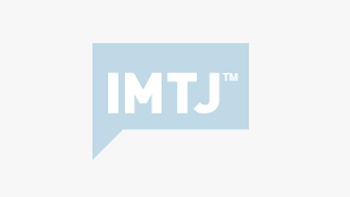Switzerland is targeting wealthy Russians who ski at top resorts to visit the country for anything from a health check to full surgery. There are no official figures on Swiss medical tourism numbers or revenue. Jan Sobhani, of Zurich-based Swixmed, which arranges treatment for foreign patients, makes the bold claim that it is now worth US$1 billion, and by 2020 will be worth over $5 billion.
Switzerland is targeting wealthy Russians who ski at top resorts to visit the country for anything from a health check to full surgery.
There are no official figures on Swiss medical tourism numbers or revenue. Jan Sobhani, of Zurich-based Swixmed, which arranges treatment for foreign patients, makes the bold claim that it is now worth US$1 billion, and by 2020 will be worth over $5 billion. This figure is said to be 60% from medical treatment and 40% from extra tourism including hotel rooms. Patients often travel with at least one relative and stay in luxury five-star hotels.
University Children’s Hospital Zurich is attracting Russians for surgery and check-ups.
In 2011 Switzerland plans to broaden its target market for the luxury end of the medical tourism trade, by targeting wealthy visitors from the Arabian Gulf region. The Swiss healthcare system enjoys an excellent reputation: doctors and nursing staff are highly trained and it constantly invests in technology and a state-of-the-art infrastructure.
Tourist authorities are distributing 6,000 nine- page brochures for Russians at Swiss skiing resorts including Davos, Klosters, St. Moritz and Zermatt. The campaign highlights the high quality of Switzerland’s doctors, the “country’s reputation for quality and historical links to Russia. It is not offering cut-price treatment. Switzerland focuses on state-of-the-art procedures that may not be available elsewhere. For example, a Zurich hospital was the world’s first to use ultrasound to kill brain tumor cells without cutting open the skull. While the Swiss doctors employed a technique involving three 5-millimeter (0.2 inch) cuts, Russian surgeons would have used a more invasive procedure that involves making a 4-centimeter incision.
Antoine Hubert of Genolier Swiss Medical Network says that out of 12,000 patients admitted to hospital last year, 600 came from abroad, a much higher proportion than five years ago. But although only 5% of numbers, they are responsible for 15 % of the company’s revenue, “Foreign patients profit from our wellness offer and hotel services and often come accompanied with family members, who also stay at the clinic. Foreign patients generate more income and profit than a Swiss private patient.” Genolier’s flagship clinic, which overlooks Lake Geneva and Mont Blanc, has a new presidential suite with exclusive comfort and privacy, and prices to match.
According to United Nations comparisons, only Japan, Hong Kong and Iceland, have a longer average life expectancy than the 81.7 years of Switzerland. Hirslanden Private Hospital Group, Switzerland’s largest private health-care provider, is seeking annual growth of about 10 percent in foreign patients within the next five years. Hirslanden runs 14 clinics from Lake Constance on the Austrian border to Lake Geneva on the frontier with France, and is collaborating with hospitals in Jeddah and Dubai to attract Arab patients. Hirslanden has a new deal with the International Medical Center (IMC) in Jeddah, Saudi Arabia. The collaboration will give patients in Saudi Arabia access to the Hirslanden network, filling gaps in the medical care provided in the kingdom. The co-operation includes the referral of patients to Hirslanden, the exchange of doctors, and the transfer of knowledge at various levels of care, medicine and administration.
Switzerland’s main competitors in the luxury medical tourism market are Austria, USA, the UK and Germany. Switzerland has a long history of medical tourism, dating back to the Romans when wealthy travelers came to take the waters. In the early days, these healing mineral waters were thought to offer cures for all kinds of diseases. At the beginning of the twentieth century, patients from all over the world came to Switzerland for treatment in Alpine clinics. Today, patients from around the world travel to Switzerland for the high quality and range of these medical clinics.








 ©2024 All rights reserved LaingBuisson
©2024 All rights reserved LaingBuisson 


